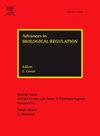New strategies for combating fungal infections: Inhibiting inositol lipid signaling by targeting Sec14 phosphatidylinositol transfer proteins
Abstract
Virulent fungi represent a particularly difficult problem in the infectious disease arena as these organisms are eukaryotes that share many orthologous activities with their human hosts. The fact that these activities are often catalyzed by conserved proteins places additional demands on development of pharmacological strategies for specifically inhibiting target fungal activities without imposing undesirable secondary effects on the host. While deployment of a limited set of anti-mycotics has to date satisfied the clinical needs for treatment of fungal infections, the recent emergence of multi-drug resistant fungal ‘superbugs’ now poses a serious global health threat with rapidly diminishing options for treatment. This escalating infectious disease problem emphasizes the urgent need for development of new classes of anti-mycotics. In that regard, Sec14 phosphatidylinositol transfer proteins offer interesting possibilities for interfering with fungal phosphoinositide signaling with exquisite specificity and without targeting the highly conserved lipid kinases responsible for phosphoinositide production. Herein, we review the establishment of proof-of-principle that demonstrates the feasibility of such an approach. We also describe the lead compounds of four chemotypes that directly target fungal Sec14 proteins. The rules that pertain to the mechanism(s) of Sec14 inhibition by validated small molecule inhibitors, and the open questions that remain, are discussed – as are the challenges that face development of next generation Sec14-directed inhibitors.



 求助内容:
求助内容: 应助结果提醒方式:
应助结果提醒方式:


